Materials & Care
By taking care of your clothes in the right manner you can ensure your clothes have a significantly longer life span. Different materials and pieces of clothing require different care. Therefore, we have gathered a guide and tips on caring for your clothes, for them to remain in great condition for as long as possible.
Caring for different kinds of garments
Blazers
- Blazers are often sewn together from multiple pieces of different fabrics including the lining and shoulder padding. This is the reason why blazers usually cannot be machine washed and, in most cases, need to be professionally cleaned. Be sure to always check the garments care label for the proper instructions.
- Airing out your blazer after every use reduces the need for excessive washing or cleaning. Depending on the material of your blazer, you can also brush it with a garment brush to tidy it up.
- Do not iron your blazer, but rather steam it in order to get rid of wrinkles and freshen up your garment.
- Store your blazer on a wide hanger to keep it looking sharp.
Wool Knitwear
Pilling is a natural characteristic of wool and other soft knitwear materials such as merino and alpaca. Pills form when short surface fibers work their way out of the yarn during wear, especially in new garments or when the material is exposed to friction. Body heat and moisture can also soften the fibers, causing them to cling together and form small balls on the surface.
How to care for your knitwear and reduce pilling:
- Gently remove pills with a fabric comb, cashmere comb, or clothing brush. Glide the tool lightly in one direction.
- Once the loose surface fibers have been removed, the garment usually pills significantly less over time.
- Air out your knit regularly - wool naturally refreshes itself and does not need frequent washing.
- If washing is necessary, use a wool program and a detergent suitable for wool. Reshape the garment gently while damp and dry it flat.
- Avoid heavy friction, such as wearing backpacks or shoulder bags directly against the knit.
- Give your knitwear a break between wears. Wool recovers naturally when it is not worn every day.
Wool Coats
- Cleaning and stain removal should be done only by professional dry cleaning.
- Any wrinkles can be removed by placing the jacket in a humid environment.
- Regular airing is recommended.
- Store in a dry place and in a cotton bag if possible.
Down Coats
- Store your down pieces in room temperature in a dry area.
- In case you have not used your down garment in a while, fluff it lightly before wearing for it to regain its volume.
- To avoid washing your down garments too often, you can air them out regularly. When your down garment needs washing, we recommend for you to get it professionally cleaned. Clean down insulates the cold and keeps you warm better than un-washed down.
- If you wash your down garments in a washing machine, remember to always check the care label for the washing temperature. 30 degrees Celsius is a safe choice in case in doubt. There should be plenty of room in your washing machine. We recommend for you to use only 1/3 of the normal amount of detergent than normally when washing down. Before washing, thoroughly wet your down garment, close all zippers and buttons and remove any possible accessories. Select a program with a long rinse and spin.
- You can dry your down garments in the dryer with a few tennis balls to fluff up the garment as it dries. Remove the down garment from the dryer a few times during the program and fluff up the feathers to avoid them getting squashed.
- Use this same process when air drying. The drying program usually takes a few hours in the dryer. By air drying, the process takes a few days.
- Remember to always get your down pieces cleaned before storing. Down is stored best in a spacious box, or a garment bag to prevent the feathers from clumping.
Denim
- Please note that the material may experience some color transfer when worn, which is typical for dyed fabrics.
- We recommend washing the jeans before use, inside out.
- Please wash seperately inside out and do not use detergents with optical brighteners.
- Avoid contact with light colored fabrics and furnitures and other articles. The above properties are typical to the product and cannot be considered as defect or as a reason for claim.
- When washing your denim garments, turn them inside out and check that the pockets are empty and that the zippers and buttons are closed.
- Avoid washing your denim products too often later on, as washing will fade the color of your jeans and wear out the elastane in the fabric. The wearing out of the material will affect the look and fit of your jeans.
- Instead of washing, air out your denim in between washes. If your jeans have stains, you can clean them individually with a damp cloth.
- Hang your jeans to air dry, and never use the dryer on denim products.
Tulle & Lace
- Tulle skirts cannot be washed at home and tulle garments require professional cleaning. Lace garments can be gently washed by hand, but we recommend professional cleaning for them as well.
- Store tulle and lace in airy space, so that they do not wrinkle or crease. Both tulle and lace can be steamed if they wrinkle. However, we do not recommend for you to steam pleated tulle, for the pleating to remain in shape.
Leather Shoes
- Protect your leather and suede products with specific care and protection creams.
- You can clean your leather products by wiping off dirt with a damp gentle cloth. If the product needs intense cleaning, we recommend for you to get the product professionally cleaned with a specific leather wash.
- Do not store leather products in direct sunlight, to avoid fading and deterioration of the material.
Care by Materials
SILK
Silk is one of the most luxurious materials available – incredibly lightweight, soft and smooth to the touch.
Care instructionsORGANIC COTTON & BLENDS
Cotton is a natural fiber that’s comfortable to wear, gentle to the skin and easy to maintain.
Care Instructions
LINEN
One of the most eco-friendly materials, comes from the cellulose fibers in the stalk of the flax plant.
VISCOSE
Viscose, originally created as a replacement to silk, is a wood-based fiber made from wood pulp.
Care instructions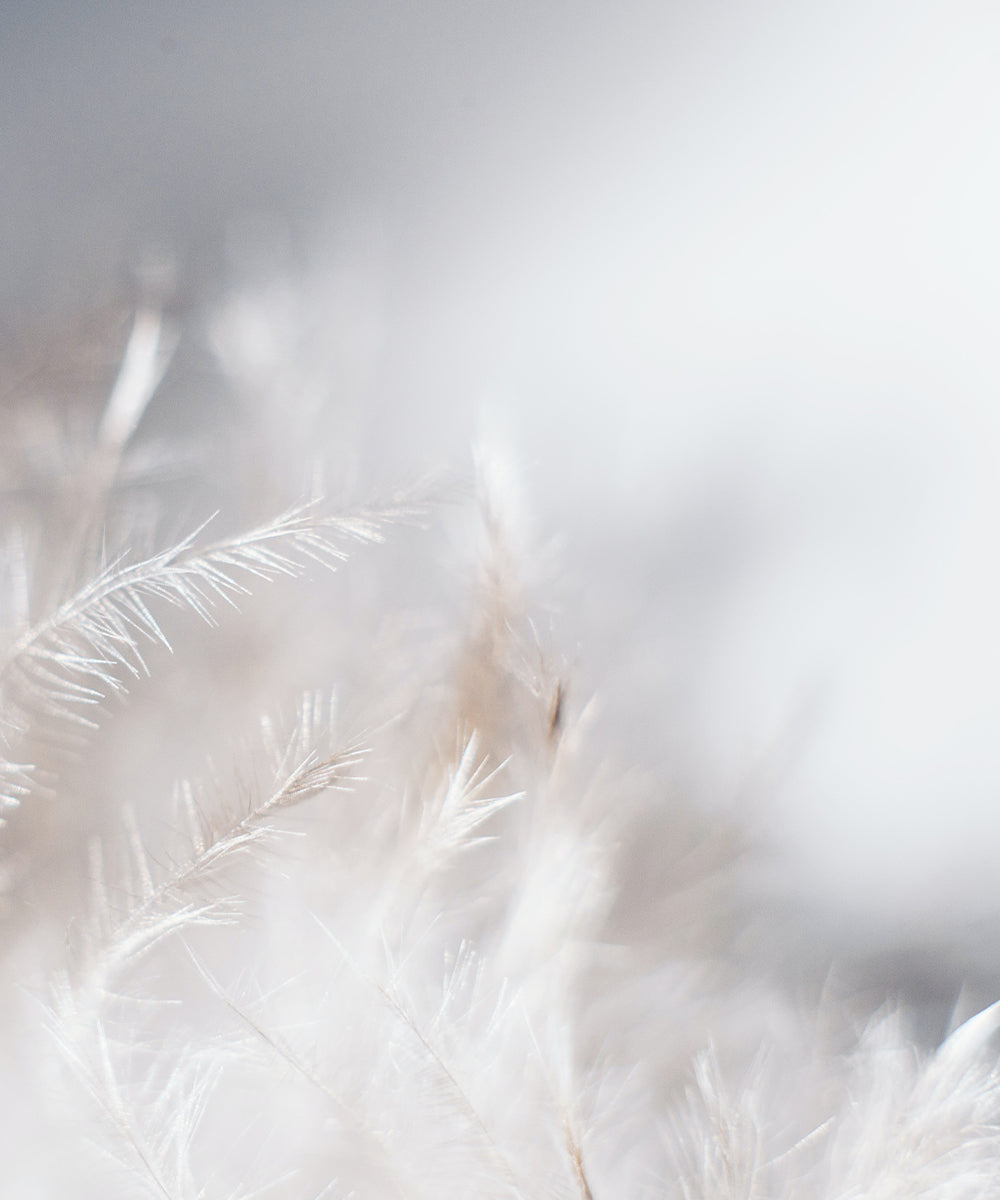
RDS-CERTIFIED DOWN
Down is a resilient material with great insulating properties.
Care instructions
CASHMERE
Cashmere is one of the most luxurious and high-quality fibers available.
Care instructions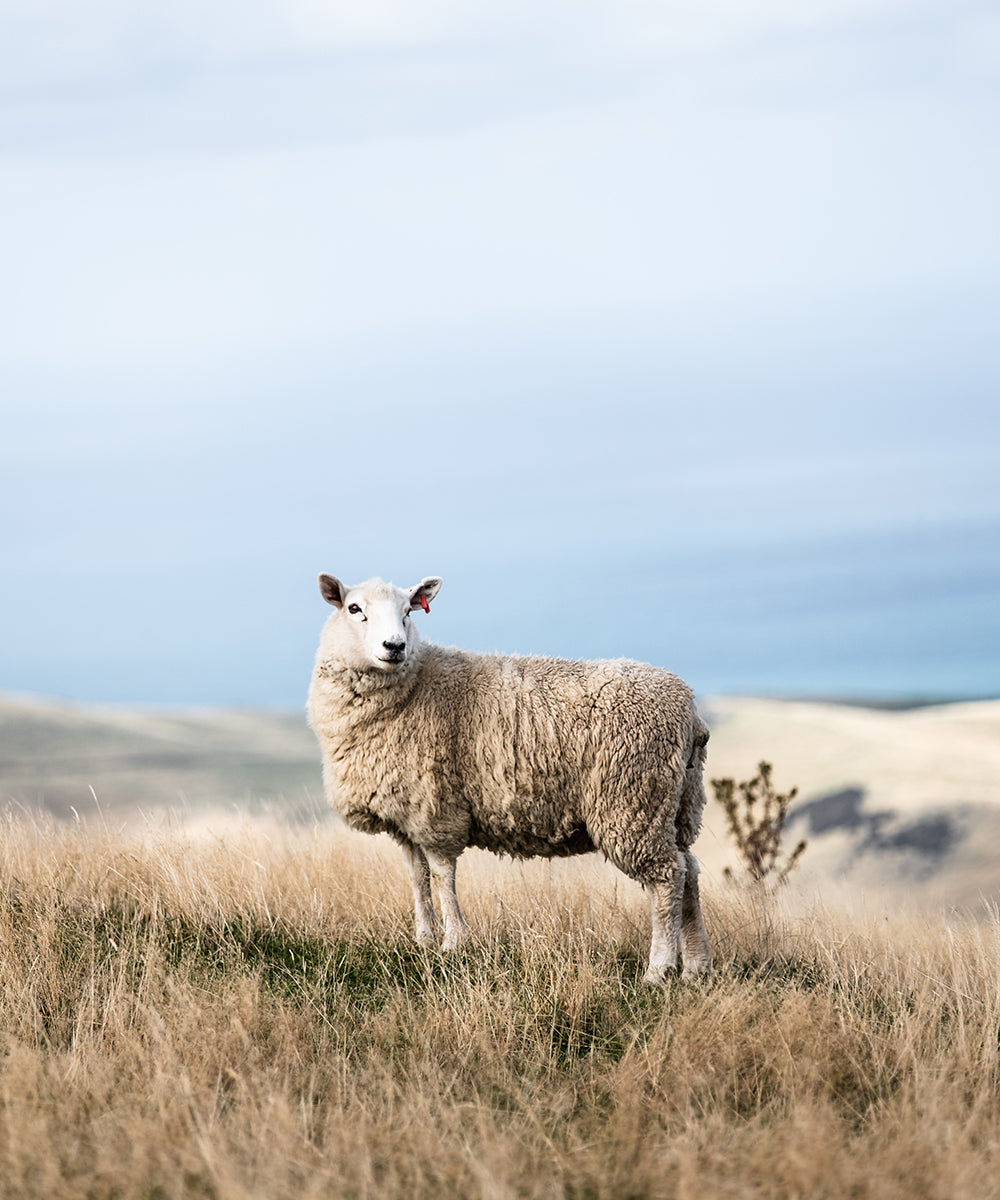
WOOL
Wool is a natural fiber obtained from sheep and other animals.
Care instructions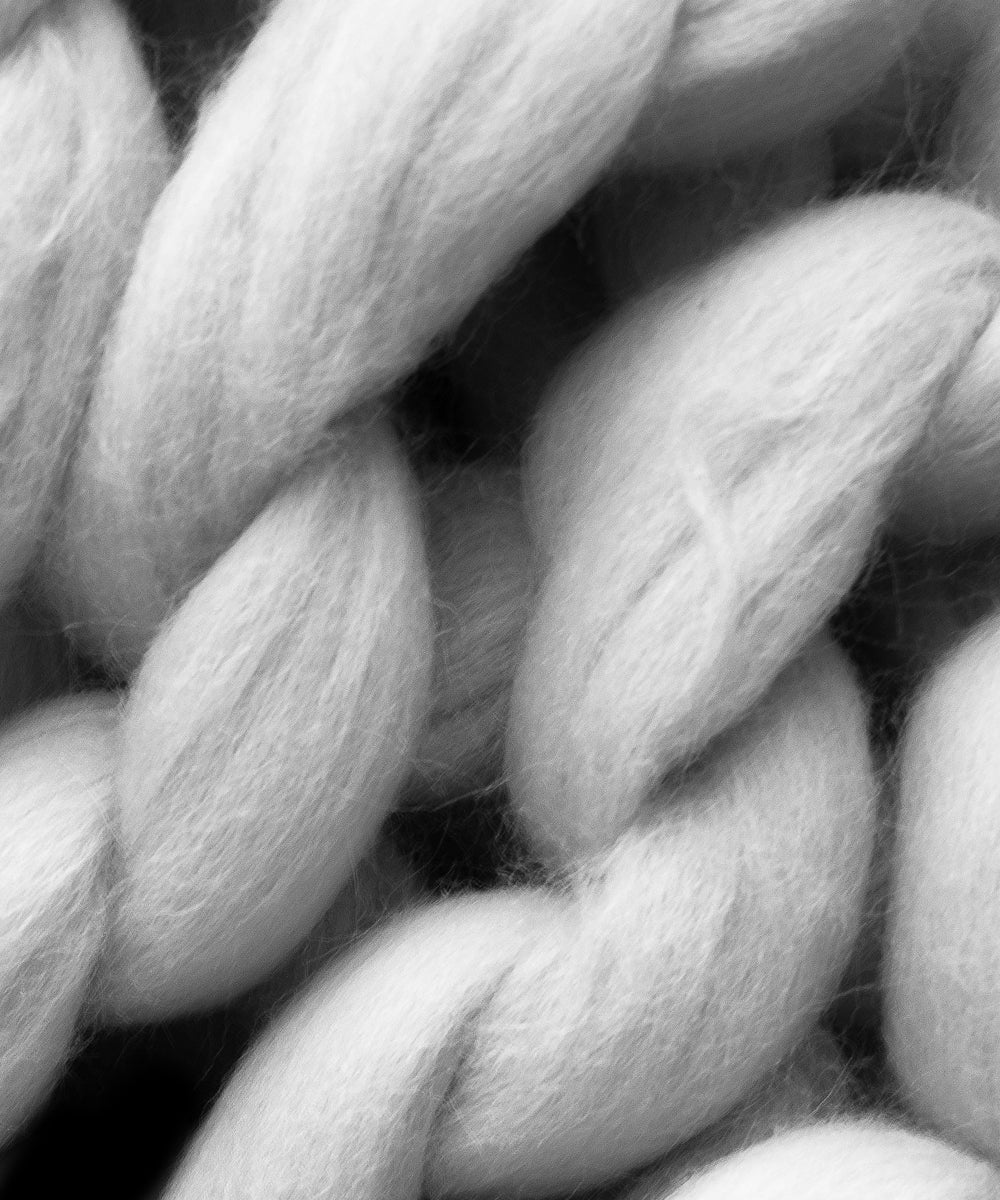
MERINO WOOL
Merino is one of the finest types of wool making it ideal for people with sensitive skin.
Care instructions
LEATHER
Leather – a durable and long-lasting material – comes from the tanned raw hide of animals.
Care instructions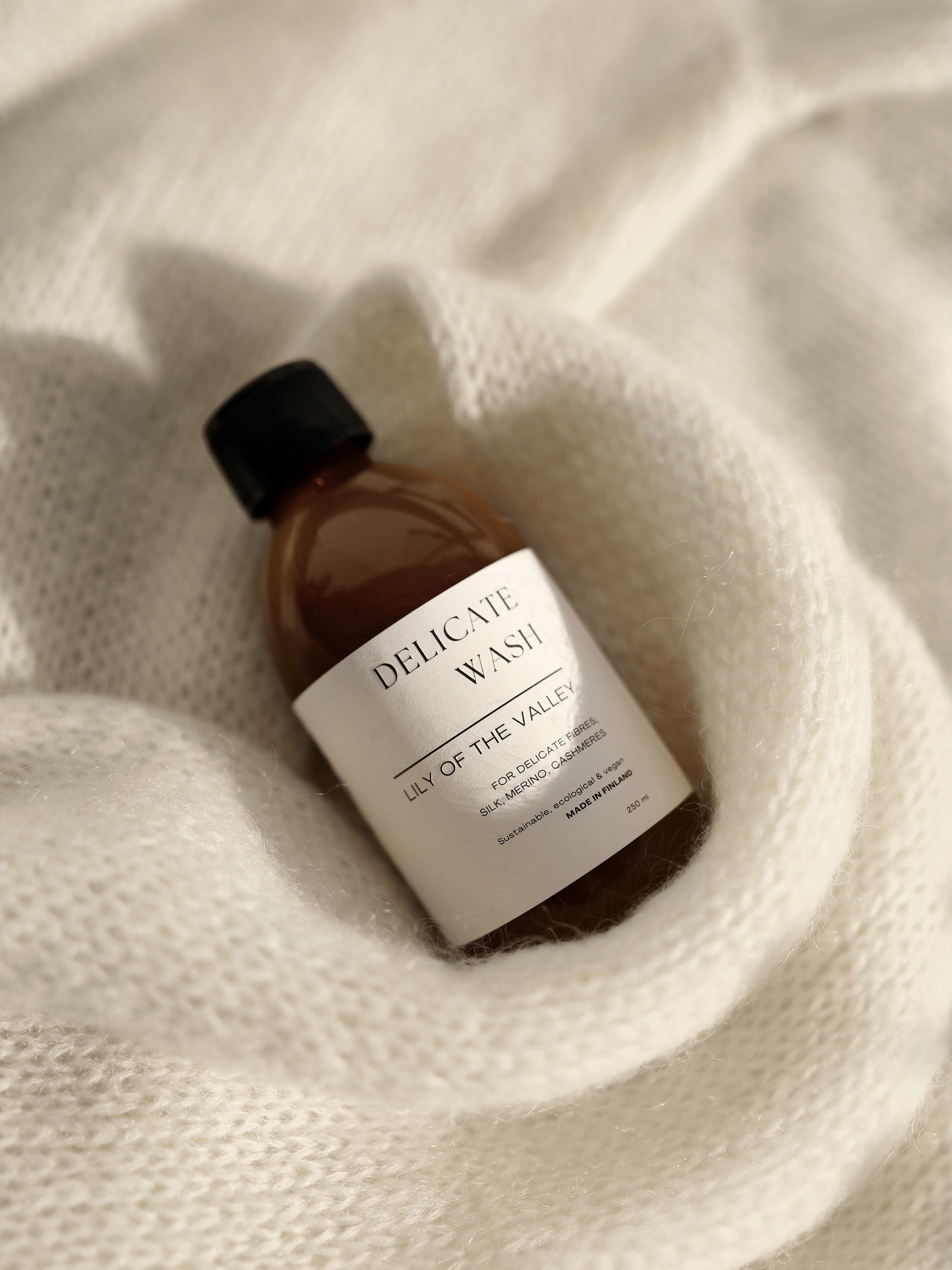
What to consider when washing your clothes
- Always follow the care label instructions as they are meant for the specific products and written by professionals.
- Wash only dirty clothes to save energy, water, and the materials longevity. Wash only full loads of laundry and sort the clothing by color and wash cycle. However, remember that with delicate wash cycles the washing machine should not be full, allowing more space for the clothing.
- If you wash your clothes in the washing machine, tie any loose strings, and fasten the buttons before washing in order to prevent the material from stretching or snagging.
- If you wash clothes that are made from thin or delicate fabrics, put them in a wash bag before machine wash.
- Remember that the temperature stated on the care label is the highest temperature that piece of clothing can take. Also, washing in lower temperatures is friendlier to the environment.
- The two most gentle washing programs are the wool and silk programs. These programs are suited for the most delicate garments as well.
- Avoid using the dryer and ironing your clothes as much as possible to save energy and give your clothes a longer lifespan. Instead, let your clothes air dry and steam them.
How to store your clothes
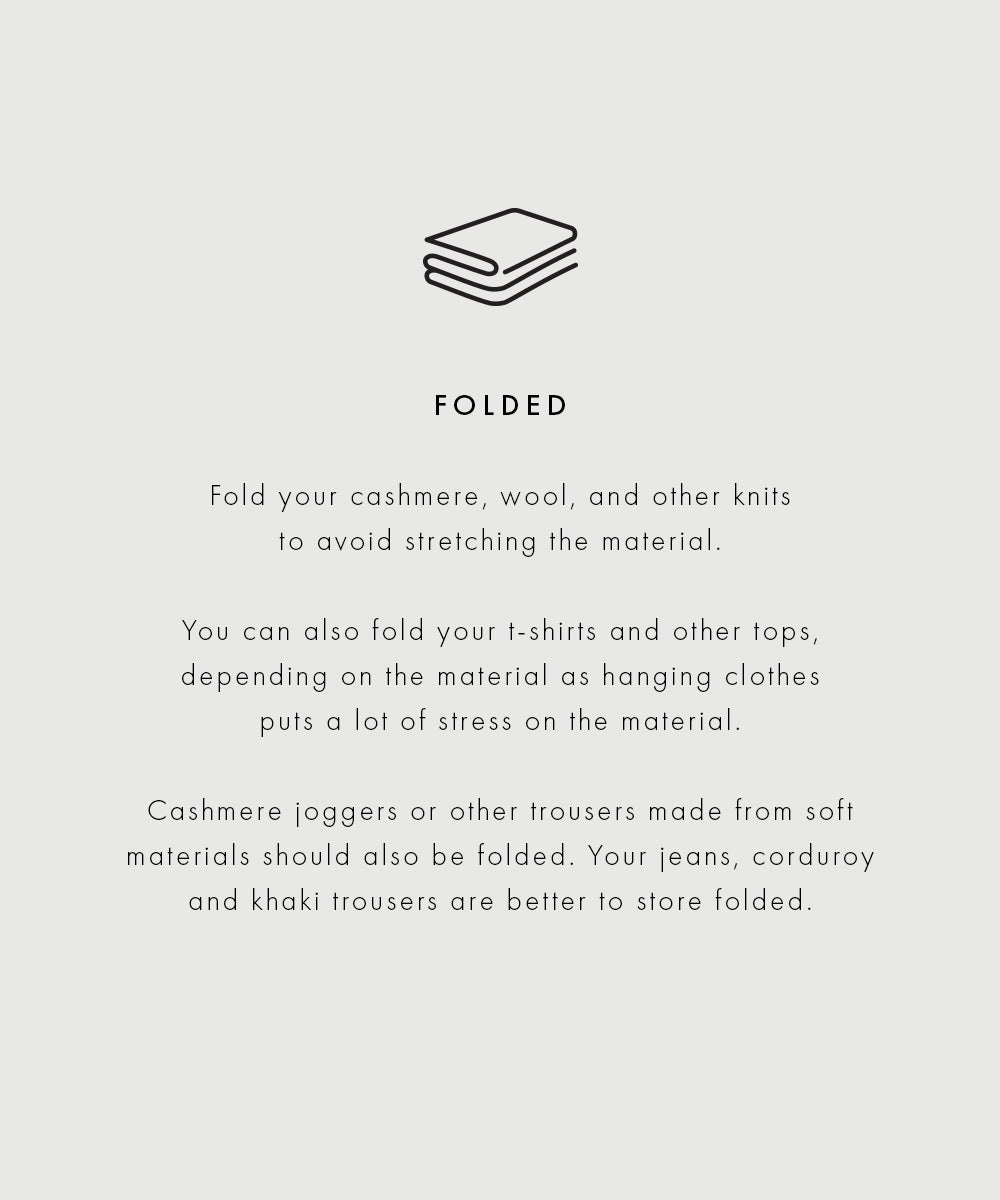
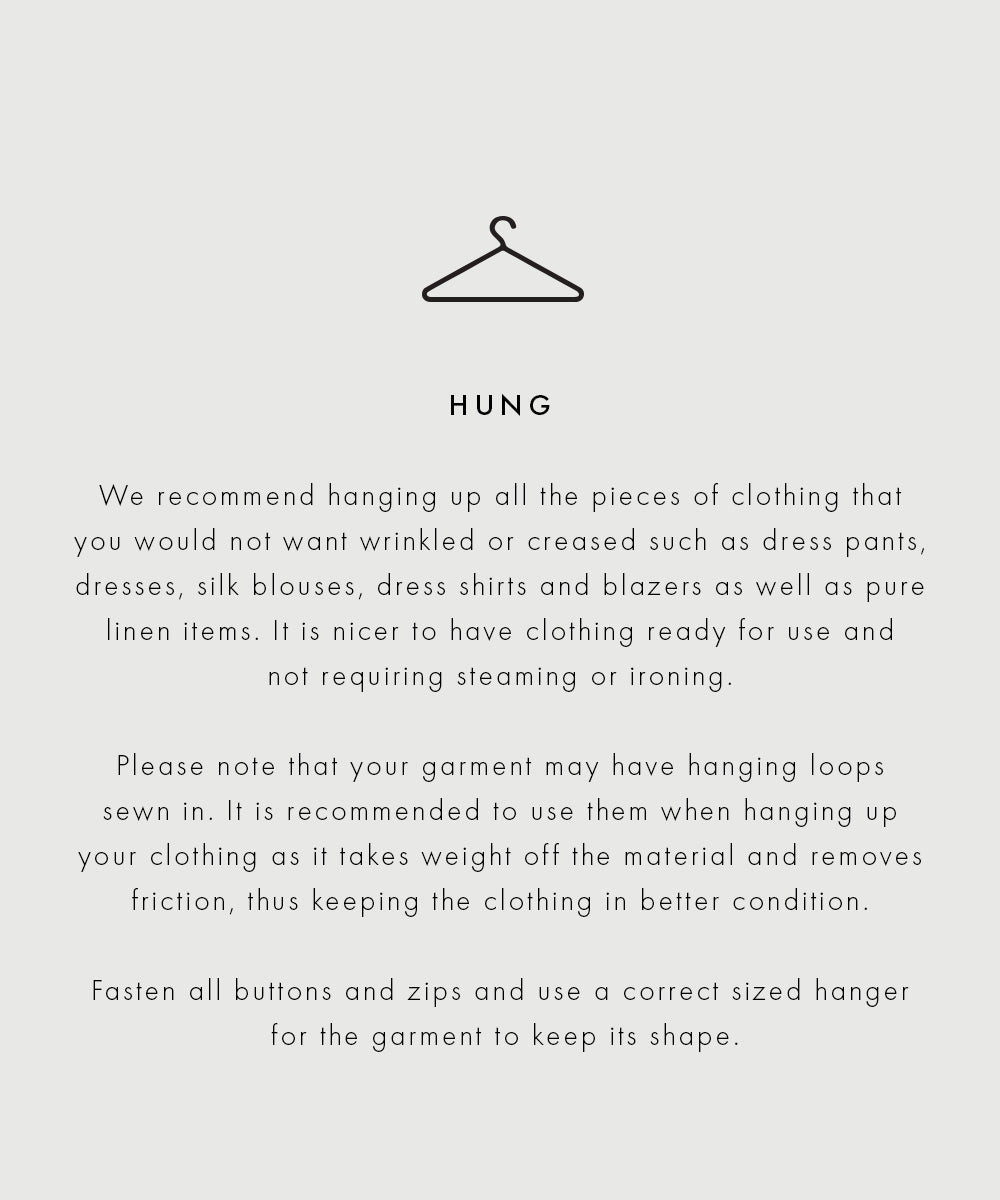
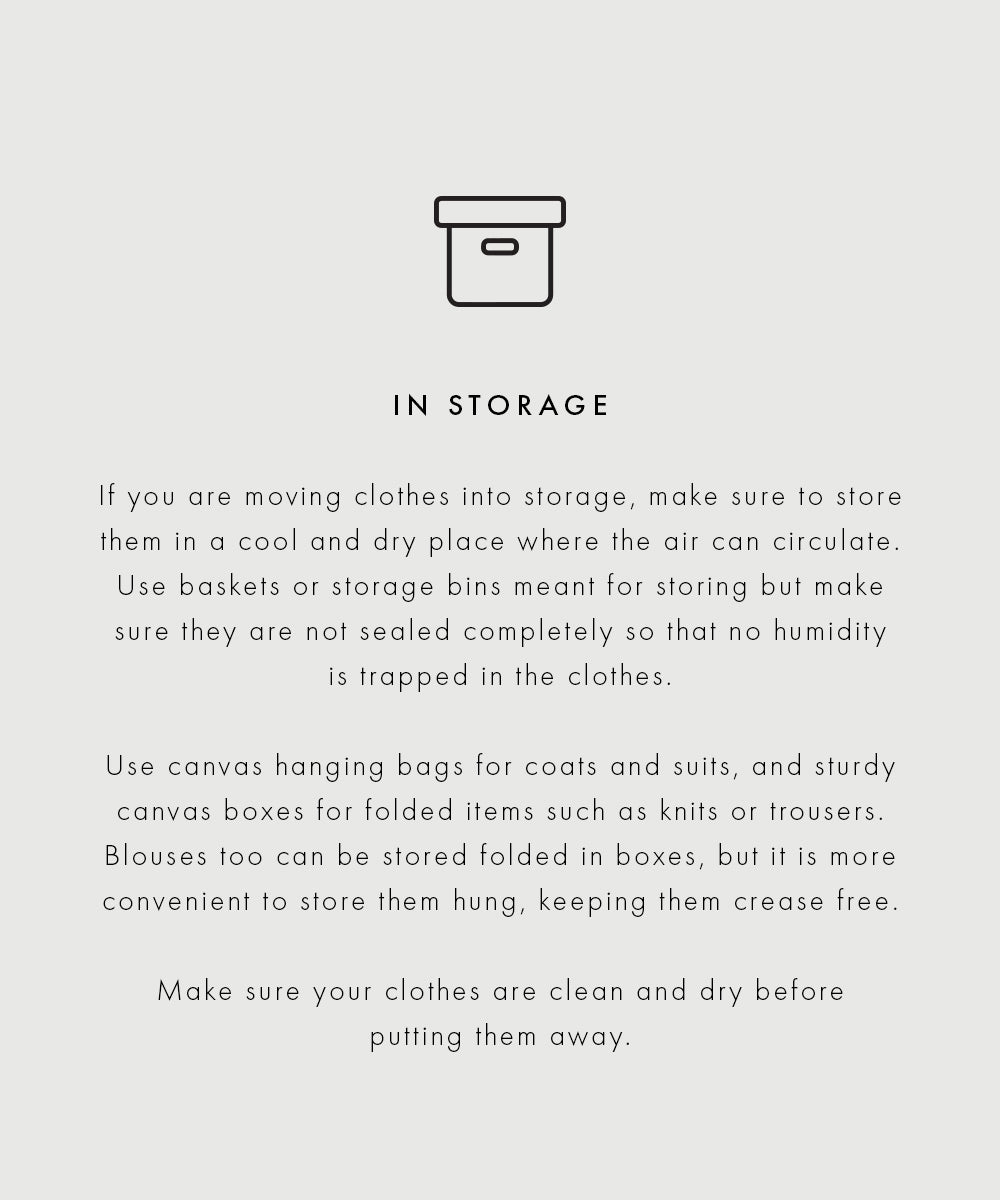
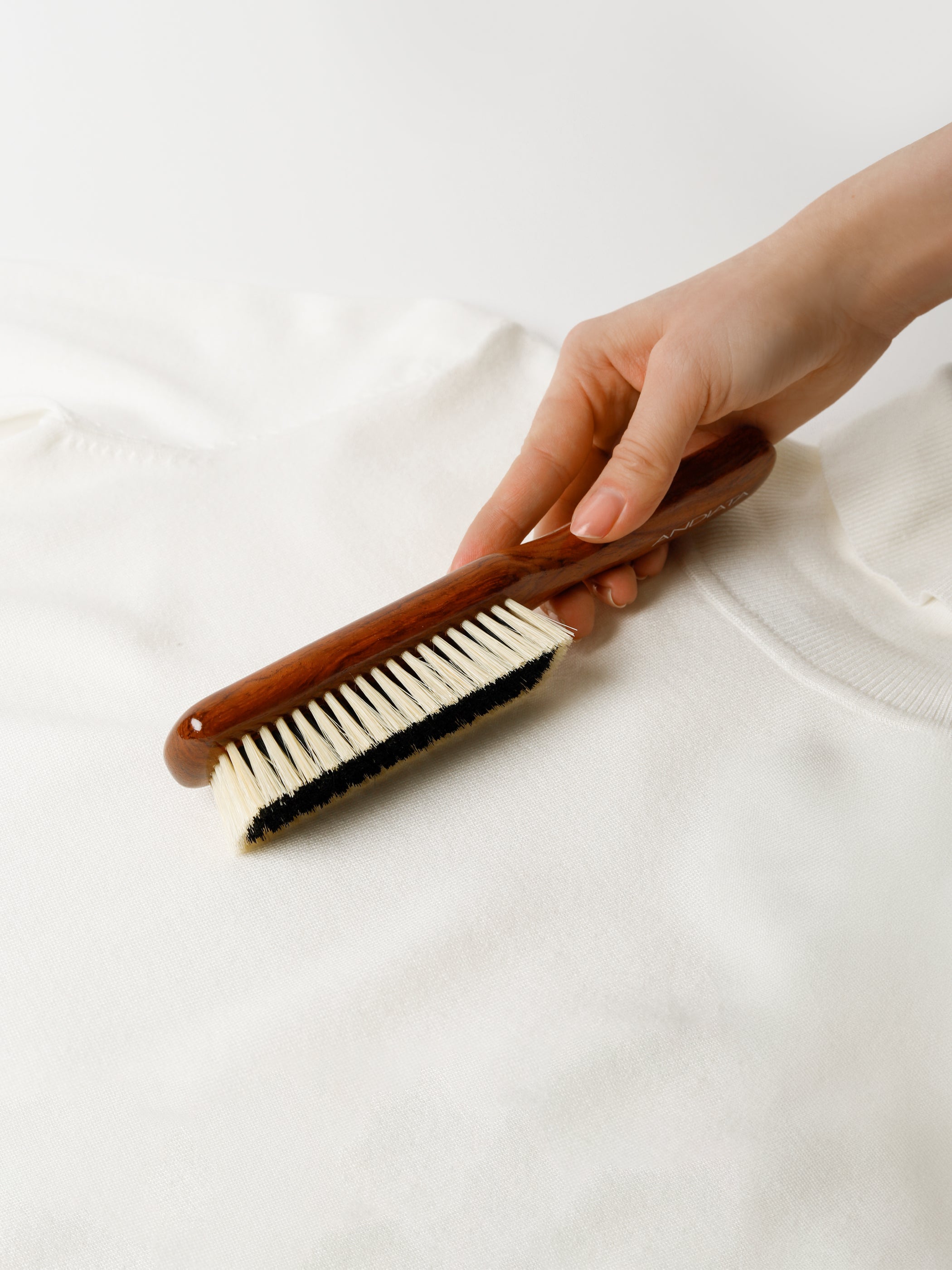
How to give your clothes a new life
REPAIR
- Before throwing old clothes away, check if they are repairable.
- Please note that our buttons are sewn industrially, so we recommend reinforcing the stitches on the buttons when you start using the product. Unfortunately button detachment is not a reason for a reclamation. Luckily buttons and zippers are easily fix or replaceable. Use the spare matching button or replace all buttons to fix your garment or to give it a fresh new look. Zippers are easily fixed at your local cobbler.
- Holes and tears can be fixed by a professional tailor or by yourself if you have the know-how.
- If you want to give your clothes a new look, you can always alter them to your liking for example by cropping the hems of your jeans or trousers, or altering the silhouette of your old coat at a seamstress.
RECYCLE
- If you have no use for your clothes, you can sell, donate, or gift your unused clothes to give them a new life.
- If your garment is beyond repair, remember to recycle it properly at your local recycling station.




